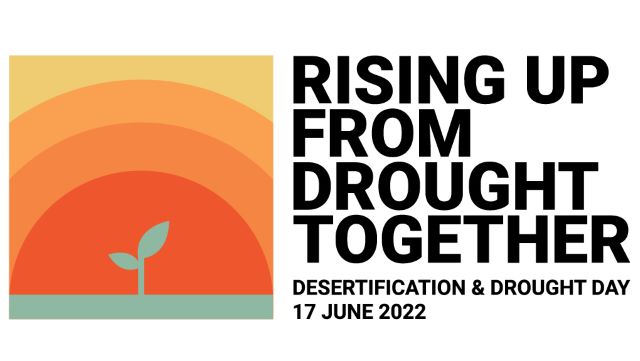
From 2000 to 2019, 17 million people were affected by drought in Latin America, with Guatemala, Haiti, Paraguay, Honduras, and El Salvador the top five countries on the list. Mexico City experienced its worst drought in thirty years in 2021.
“Drought is not just the absence of rain; it is often fuelled by land degradation and climate change. Together, we can overcome its devastating effects on people and nature around the world and start preparing now to drought-proof our future,” said Teresa Ribera Rodríguez, vice president of the government of Spain and minister for ecological transition and demographic challenge.
In 2019, the U.S. Drought Monitor said 95% of the Western United States was experiencing drought conditions. In the summer of 2021, two of the largest reservoirs on the Colorado River— Lake Mead and Lake Powell— reached their lowest recorded levels, according to the U.S. Bureau of Reclamation.
Researchers from the University of California, Los Angeles (UCLA), the National Aeronautics and Space Administration (NASA), and the Columbia Climate School at Columbia University also published similar findings in the journal Climate Change.
Studying the area from southern Montana to northern Mexico, and from the Pacific Ocean to the Rocky Mountains, researchers discovered that megadroughts occurred repeatedly in the region from 800 to 1600.
But according to the UCLA-led study, the drought that has enveloped southwestern North America for the past 22 years is the region’s driest drought since at least the year 800.
With high temperatures and low precipitation levels from summer 2020 through summer 2021, the drought exceeded the severity of a late-1500s megadrought that had been identified as the driest such drought in the 1,200 years that the scientists studied.
UCLA geographer Park Williams, the study’s lead author, said with dry conditions likely to persist, it would take multiple wet years to remediate their effects.
The researchers calculated the intensity of droughts by analyzing tree ring patterns, which provide insights into soil moisture levels each year over long timespans.
They also confirmed their measurements by checking findings against historical climate data. Periods of severe drought were marked by high degrees of “soil moisture deficit,” a metric that describes how little moisture the soil contains compared to its normal saturation.
Since 2000, the average soil moisture deficit was twice as severe as any drought of the 1900s — and greater than it was during even the driest parts of the most severe megadroughts of the past 12 centuries.
Williams said the finding suggests that dramatic shifts in dryness and water availability happened in the Southwest prior to the effects of human-caused climate change becoming apparent in the 20th century.
Existing climate models have shown that the current drought would have been dry even without climate change, but not to the same extent. The paper found that human-caused climate change is responsible for about 42% of the soil moisture deficit since 2000.
One of the primary reasons climate change is causing more severe droughts is that warmer temperatures are increasing evaporation, which dries out soil and vegetation. From 2000 to 2021, temperatures in the region were 0.91 degrees Celsius (about 1.64 degrees Fahrenheit) higher than the average from 1950 to 1999.
Regulators have continued to implement water conservation measures in response to water shortages caused by the drought. In August, for example, federal officials cut water allocations to several southwestern states in response to low water levels in the Colorado River. And in October, California Gov. Gavin Newsom declared a drought emergency and asked Californians to voluntarily decrease their water usage by 15%.
Williams said initiatives like those will help in the short term, but water conservation efforts that extend beyond times of drought will be needed to help ensure people have the water they need as climate change continues to intensify drought conditions.
The U.S. Army Corps of Engineers has been tasked with…
Brown and Caldwell, a leading environmental engineering and construction firm,…
Humboldt State University, one of four campuses within the California…